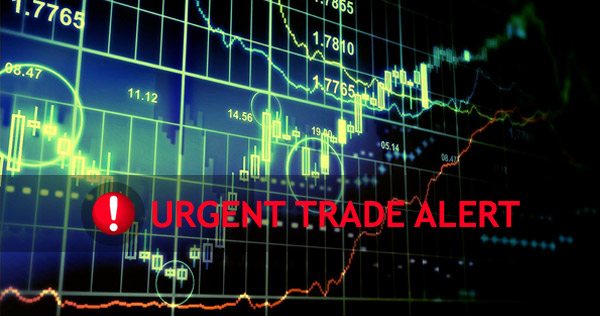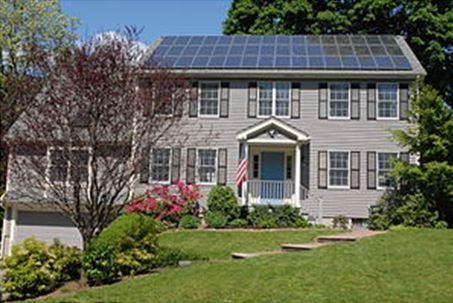While the Diary of a Mad Hedge Fund Trader focuses on investment over a one week to six-month time frame, Mad Day Trader, provided by Jim Parker, will exploit money-making opportunities over a brief ten minute to three day window. It is ideally suited for day traders, but can also be used by long-term investors to improve market timing for entry and exit points.
As a potentially profitable opportunity presents itself, John will send you an alert with specific trade information as to what should be bought, when to buy it, and at what price. This is your chance to ?look over? John Thomas? shoulder as he gives you unparalleled insight on major world financial trends BEFORE they happen. Read more
While the Diary of a Mad Hedge Fund Trader focuses on investment over a one week to six-month time frame, Mad Day Trader, provided by Jim Parker, will exploit money-making opportunities over a brief ten minute to three day window. It is ideally suited for day traders, but can also be used by long-term investors to improve market timing for entry and exit points.
Global Market Comments
April 21, 2014
Fiat Lux
Featured Trade:
(JULY 11 SARDINIA, ITALY STRATEGY LUNCHEON)
(THE 1% AND THE BOND MARKET),
(TLT), (TBT), (MUB), (LQD), (ELD), (JNK),
(MAKE YOUR NEXT KILLING IN AFRICA),
(AFK), (GAF)
iShares 20+ Year Treasury Bond (TLT)
ProShares UltraShort 20+ Year Treasury (TBT)
iShares National AMT-Free Muni Bond (MUB)
iShares iBoxx $ Invst Grade Crp Bond (LQD)
WisdomTree Emerging Markets Local Debt (ELD)
SPDR Barclays High Yield Bond (JNK)
Vectors Africa Index ETF (AFK)
SPDR S&P Emerging Middle East & Africa (GAF)
As a potentially profitable opportunity presents itself, John will send you an alert with specific trade information as to what should be bought, when to buy it, and at what price. This is your chance to ?look over? John Thomas? shoulder as he gives you unparalleled insight on major world financial trends BEFORE they happen.
Further Update to: Trade Alert -(TLT)
Buy the iShares Barclay 20+ Year Treasury Bond Fund (TLT) May, 2014 $114-$117 in-the-money bear put spread at $2.40 or best
Opening Trade
4-17-2014
expiration date: May 16, 2014
Portfolio weighting: 10%
Number of Contracts = 42 contracts
After holding back for months, I finally shot out a Trade Alert to sell short the Treasury bond market (TLT). The second the high frequency traders got a whiff of my trade, they crunched the market nearly an impressive two points.
Congratulations to the Trade Alert followers who managed to get in quick enough. For those who didn?t, wait for the next one. There are plenty of fish in the sea.
Discretion has certainly been the better part of valor in the fixed income market in 2014. To a man, hedge fund traders expected bond prices to take a dive this year, and for yields to soar. Instead, we got the opposite, and yields have plunged, from 3.05% for the ten-year Treasury to 2.59% this week.
There are many important lessons to learn here. This is not your father?s bond market. The internal dynamics of the fixed income markets have changed so much in the last three decades that it has become unrecognizable to long term practitioners, like myself.
A big factor has been the takeover of the bond market by the 1%, the richest segment of the US, and indeed, the global economy. As wealth concentrates at the top, its character changes.
Let me stop here and tell you that the ultra rich are different from you and I, and not just because they have more money. I have learned this after decades long relationships with the planet?s wealthiest families, including the Rockefeller?s, Rothschild?s, DuPont?s, Morgan?s, and Pritzkers, first as clients of mine at Morgan Stanley, then as investors in my hedge fund.
The wealthier families become, the more conservative the get in their investment choices. Their goal shifts from capital appreciation to asset protection. They lose interest in return on capital and become obsessed with return of capital. This is how the rich stay rich, sometimes for centuries.
What this means for the bond market is that they never sell. When they buy a 30-year Treasury bond, it is with the expectation of keeping it for the full 30 years, until it matures. That way they can avoid capital gains taxes and only have to pay interest on the coupon interest.
Back in the 1980?s, when wealth was more evenly distributed, the top 1% only accounted for 1% of Treasury bond ownership. Today, that figure is closer to 25%. Add this to the 50% of our national debt that is owned by foreign investors, primarily central banks, who also tend to also hold paper for its full life. Central banks don?t pay taxes either.
China and Japan, and the biggest holders, with around $1 trillion each. This means that 75% or more of bonds are owned by investors who won?t sell. What does that mean for the rest of us? Bond prices that never go down.
With bond prices very close to 30-year highs, keeping your bonds have been the right thing to do. I can?t tell you how many investment advisors I know who have distilled their practices down to fixed income instruments only. This involves the entire space, including municipal bonds (MUB), corporates (LQD), junk (JNK), and even emerging market debt (ELD).
This is driven my customer demand, the 1% er?s, not from any great insights or epiphany that they achieved on their own.
Of course, there is a certain amount of driving with your eyes firmly fixed on the rear view mirror going on here. Maybe the rich will finally sell their bonds once prices fall hard, stay down, and then go down some more.
Inflation rearing its ugly head might also do the trick, which is always bad for bond prices as, it reduced the purchasing power of money. That is certainly what they were doing in the early eighties, when the ten-year yield hit 12%.
The bottom line here is that while bonds are overbought and due for a pullback, they are not by any means going to crash. We could be living in the 2.60%-3.50% range for quite some time, maybe for years. That is if the new Federal Reserve governor and my friend, ultra dove, Janet Yellen, has anything to say about it. She has only just started and could be with us for another eight years.
Personally, I don?t foresee any appreciable rise in interest rates until we get well into the 2020?s, when real inflation finally returns from the dead.
The best execution can be had by placing your bid for the entire spread in the middle market and waiting for the market to come to you. The difference between the bid and the offer on these deep in-the-money spread trades can be enormous. Don?t execute the legs individually or you will end up losing much of your profit.
Keep in mind that these are ballpark prices only. Spread pricing can be very volatile on expiration months farther out.
Here are the specific trades you need to execute this position:
Buy 42 May, 2014 (TLT) $117 puts at?????$6.30
Sell short 42 May, 2014 (TLT) $114 puts at..??.$3.90
Net Cost:??????????????????.....$2.40
Profit at expiration: $3.00 - $2.40 = $0.60
(42 X 100 X $0.60) = $2,520 or 2.52% profit for the notional $100,000 portfolio.
Global Market Comments
April 17, 2014
Fiat Lux
Featured Trade:
(LAS VEGAS WEDNESDAY, MAY 14 GLOBAL STRAGEGY LUNCHEON),
(THE MARKETS ARE NOT RIGGED)
As a potentially profitable opportunity presents itself, John will send you an alert with specific trade information as to what should be bought, when to buy it, and at what price. Read more
Global Market Comments
April 16, 2014
Fiat Lux
Featured Trade:
(CHICAGO FRIDAY, MAY 23 GLOBAL STRAGEGY LUNCHEON),
(BUY SOLAR STOCKS ON THE DIP),
(FSLR), (SPWR), (SCTY), (TAN), (USO), (UNG), (XLU),
(THE ONE SAFE PLACE IN REAL ESTATE)
First Solar, Inc. (FSLR)
SunPower Corporation (SPWR)
SolarCity Corporation (SCTY)
Guggenheim Solar (TAN)
United States Oil (USO)
United States Natural Gas (UNG)
Utilities Select Sector SPDR (XLU)
Now that the stock market appears destined to soon enter correction territory, I have started searching for industries and companies that I want to buy at the bottom. The solar industry is at the top of that list.
Solar has a been a long time in coming. For decades, it was a niche energy source with very narrow following among scientists, the military, and Greenpeace activists. The problem was that it was just too expensive. It made sense only to those with unlimited budgets (the army), pursuing a political agenda (environmentalists), or when there was no other alternative power source (outer space).
Ironically, what really got the solar bandwagon moving was oil, which saw prices soar to $150 a barrel in 2008. That dramatically raised the breakeven cost of solar. Projects that only existed on paper suddenly made economic sense.
Then, Barack Obama was elected president. One of his first moves was to make available over $100 billion in subsidies for alternative energy projects of every description. All of a sudden, it was off to the races for solar.
This led to the first solar stock market boom in 2009. Some highflyers, like First Solar (FSLR) rose tenfold (it was a favorite ?BUY? recommendation of mine at the time). They were aided by states like sun-drenched California that mandated 20% of power consumption comes from alternative sources, to rise to 30% in the 2020?s.
This created an enormous solar and wind infrastructure throughout the west to meet the state?s voracious needs. Some 29 other states have passed similar laws with varying targets.
I inspected the centerpiece of the state?s solar strategy, flying over the gigantic Ivanpah facility in a wheezing, rented Cessna 172 in the barren, baking, but beautiful Mojave Desert. I brought plenty of extra water bottles and a compass in case I crash-landed and had to walk home.
It all looks like a film set from a science fiction movie, with 347,000 concave mirrors placed in enormous circles focusing light on hot water boilers atop three 460-foot towers. The plant opened in February, 2014 and is generating 377 megawatts of electricity, enough to power 140,000 homes in the Los Angeles area.
Planned a decade ago, the technology is now so primitive that it is unlikely to be ever used again. Far more advanced than film, solar is now taking over the world.
Then China came in and spoiled the party. Overproduction by poorly managed and weakly financed Chinese solar firms using inferior technologies quickly glutted the global market, and solar prices crashed by 80% or more. Many companies did not survive, such as the San Francisco Bay Area?s Solyndra, which defaulted on some $536 million in federal government loans (the feds got $143 million back).
This triggered a Darwinian clearing out of the industry, where only the strongest, the most innovative, and the most desperate survived. Technologies and efficiencies improved. The administration extended a helping hand by slapping hefty anti dumping tariffs on Chinese imports. The industry is lobbying for further restrictions. This all set the stage for a solar renaissance.
For the first time in history, solar is now cost competitive with conventional sources of power on a standalone, unsubsidized basis. As a result, the industry is exploding. In 2013, solar accounted for 29% of new power generation capacity in the US, after quasi-green natural gas, at 46%.
The advent of cheap solar roof panels and ?smart? electric meters in 43 states has enabled individuals to get in on the act. Such devices are now a standard feature on most new high-end homes. They genuinely do save money, especially when considering that utilities will bill you up to 50 cents per kilowatt hour for prime time consumption, compared to their average rate of 11 cents. There have been over 200,000 such installations in the past two years, half in the Golden State.
The Department of Energy wants to see solar grow from 1% of total generation today to 27% by 2050. This is creating the basis for a gigantic industry in the future. Hence, my interest as a long-term equity investor.
All of this will require a complete rethinking of the electric utility industry (XLU), which still uses a volume based business model that has remained unchanged for 120 years. The more they sold the more money they made.
The utility industry has mixed feeling about the new solar revolution. They are going to have to evolve from distributors of power for a single, large, capital-intensive source to an intermediary operation that buys and sells power between millions of users and producers. This is easier said than done, as this is the most conservative of American industries. People run to utilities in a bear market for a reason.
Only the other hand, moving towards solar and other alternatives gets them out of the carbon burning business, either through using coal or oil as fuel. There is not a utility in the country that isn?t swamped by lawsuits from well represented consumers claiming that the byproducts from burning these traditional fuels gave them asthma, lung cancer, or worse.
In the end, it won?t be a desire to save the environment, or the expediency to appear politically correct that will convert utilities to solar. It will be hard-nosed business sense.
The buy on the dip list is fairly short. The front-runner in this industry is the aforementioned First Solar (FSLR), which has been an industry leader for two decades. Not only is their US business booming, they have a gigantic project in western China that promises to spin off profits for years to come.
SunPower Corp (SPWR) has the attraction of a $1 billion order backlog. Or you can go generic and buy the Guggenheim Solar ETF (TAN), which tacked on and impressive 270% last year.
I am less enamored with Solar City (SCTY). It is in the business of installing roof panels on homes. It takes advantage of generous government subsidies and the current ultra low cost of financing to keep prices low.
As much as I applaud the long-term vision of founder, Elon Musk, his association with the company has given it a cult like status. That is good for the share prices, but bad for valuations, which are through the roof. A greater dependence on subsidies could hurt them in the future.
Some formidable challenges lie ahead. In 2017 the government?s investment tax credit for solar drops from 30% to 10%. Other state subsidies are expiring as well. If this coincides with a recession that triggers a collapse in the price of oil, we could be in for another great clearing out.
Hopefully, by then, steadily advancing technology will further cut costs by half, making it possible for more firms to survive.
Until then, let the sun shine in!
Legal Disclaimer
There is a very high degree of risk involved in trading. Past results are not indicative of future returns. MadHedgeFundTrader.com and all individuals affiliated with this site assume no responsibilities for your trading and investment results. The indicators, strategies, columns, articles and all other features are for educational purposes only and should not be construed as investment advice. Information for futures trading observations are obtained from sources believed to be reliable, but we do not warrant its completeness or accuracy, or warrant any results from the use of the information. Your use of the trading observations is entirely at your own risk and it is your sole responsibility to evaluate the accuracy, completeness and usefulness of the information. You must assess the risk of any trade with your broker and make your own independent decisions regarding any securities mentioned herein. Affiliates of MadHedgeFundTrader.com may have a position or effect transactions in the securities described herein (or options thereon) and/or otherwise employ trading strategies that may be consistent or inconsistent with the provided strategies.

















